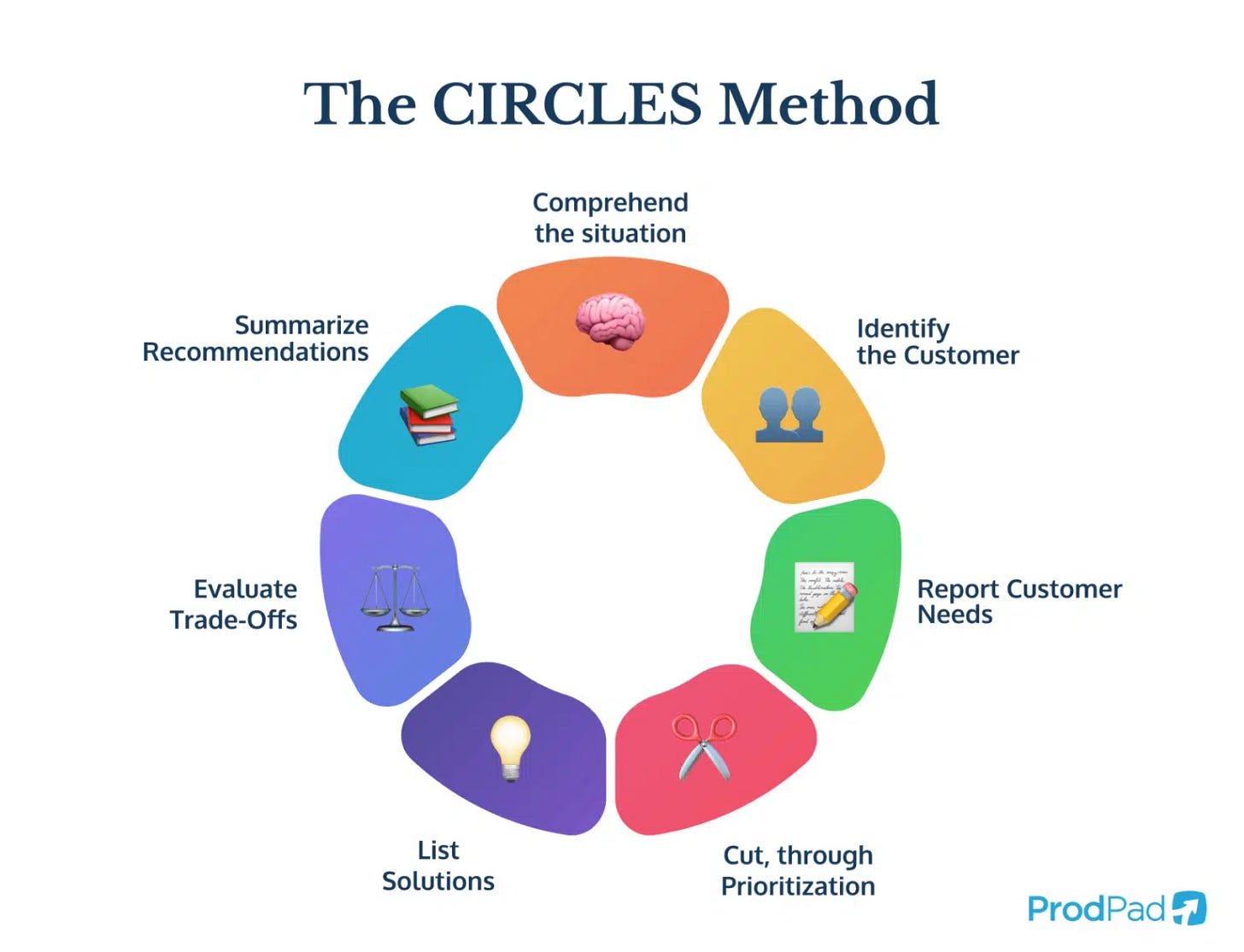In rooms where decisions carry weight—product strategy, project management, executive governance, systems design—clarity isn’t a luxury. It’s the difference between noise and impact.
That’s why top companies, including Google, look for more than answers. They look for thinkers who can structure their thinking—who can take an ambiguous prompt and carve a path through it. And for that, Google interviewers rely on something powerful:
The CIRCLES Method.
Where the CIRCLES Framework Came From
The CIRCLES framework was developed and popularized by Lewis C. Lin, a former Google product manager who noticed a recurring pattern in what made candidates succeed—or fail—in high-stakes interviews.
At Google, product managers (PMs) are constantly faced with ambiguous, high-impact problems:
Should we launch a feature globally or test regionally?
How do we solve a 30% drop in engagement with no clear cause?
What product should we build next—and why?
Lin observed that the best PMs and candidates had a way of staying calm under pressure, asking the right questions, and building solutions that were clear, customer-centric, and well-prioritized. From that, he designed the CIRCLES Method™—a structured thinking tool for solving product design and strategy problems.
It quickly became a gold standard in product management interviews, not just at Google, but also at Amazon, Meta, Microsoft, and top startups.

What Is the CIRCLES Framework?
CIRCLES is a 7-step method to handle open-ended problem-solving questions. It stands for:
C — Comprehend the Situation
I — Identify the Customer
R — Report the Customer’s Needs
C — Cut Through Prioritization
L — List Solutions
E — Evaluate Tradeoffs
S — Summarize Your Recommendation
Let’s break it down
.
1.
Comprehend the Situation
Before solving anything, you must understand it. Ask:
What’s the context?
What problem are we really solving?
What’s the business, technical, or user background?
Google PM candidates will often clarify the scope of a prompt before answering. For example, if asked, “Design a ride-sharing app for seniors,” they’ll ask follow-up questions:
Is this for urban or rural seniors?
Do they have smartphones?
Is the goal safety, speed, or accessibility?
This step shows strategic maturity. It proves you’re not rushing into solutions—you’re absorbing complexity first.
2.
Identify the Customer
Who is this really for?
At Google, PMs must often balance multiple users (e.g., advertisers, search users, partners). You must zoom in on your primary user or stakeholder. This helps ground your choices later.
You can apply this in your own work. Whether writing policy, building systems, or leading teams—clarity on the true customer changes everything.
3.
Report the Customer’s Needs
Once you’ve identified who you’re solving for, you must understand what they care about. Are they optimizing for cost? Simplicity? Accessibility? Status?
Great candidates think beyond surface wants. They frame needs as trade-offs:
Seniors may want ease of use, but also reassurance.
They might need low complexity over rich features.
They might prioritize safety over price.
This step develops empathetic design thinking—critical in product, leadership, or diplomacy roles.
4.
Cut Through Prioritization
Every real-world solution requires trade-offs. Time, resources, politics. This step is about identifying what’s most important, and putting it first.
In interviews, candidates might say, “Based on the customer’s needs, I’ll prioritize simplicity and trust over advanced features.”
In your own strategic work, it could mean aligning with OKRs or KPIs to rank initiatives.
This step signals your ability to focus, which is what leadership really values.
5.
List Solutions
Now that you’ve framed the right problem for the right user, generate ideas.
Brainstorm broadly—this isn’t the time to self-edit. But each solution should stem from the needs and priorities you’ve clarified.
For example:
Auto-simplified UI mode for seniors
Voice-based interface
Emergency-call button built into the app
A great mind doesn’t just pick from the obvious. It creates better options through context.
6.
Evaluate Tradeoffs
Now assess the options. Don’t just name features—compare them.
This is where real strategy shows. You might say,
“While a voice interface meets accessibility goals, it may add development time and complexity. A simplified UI could be faster to launch, but may not address safety concerns.”
Whether you’re in tech, government, or consulting, this step reveals your executive-level reasoning.
7.
Summarize Your Recommendation
Finally, synthesize. State your decision clearly. Back it up with reasoning.
In an interview:
“Given our user’s need for simplicity and trust, and the quick deployment timeline, I recommend starting with a simplified UI mode and a real-time customer service button. We can test the voice interface as a future feature.”
In real life:
Use this structure in presentations, proposals, or when explaining an issue. Lead with confidence, and let your structure speak for you.
Hope this helps,
Nicole






Thank you for the follow I love love your content as a black PM laid off
And denied to go to black women PM in conference in my city (New Orleans) your content is powerful !!! I have this post saved and will
Use it as inspiration and motivation for my workshop this week ! Thank you 😊
Thank you!